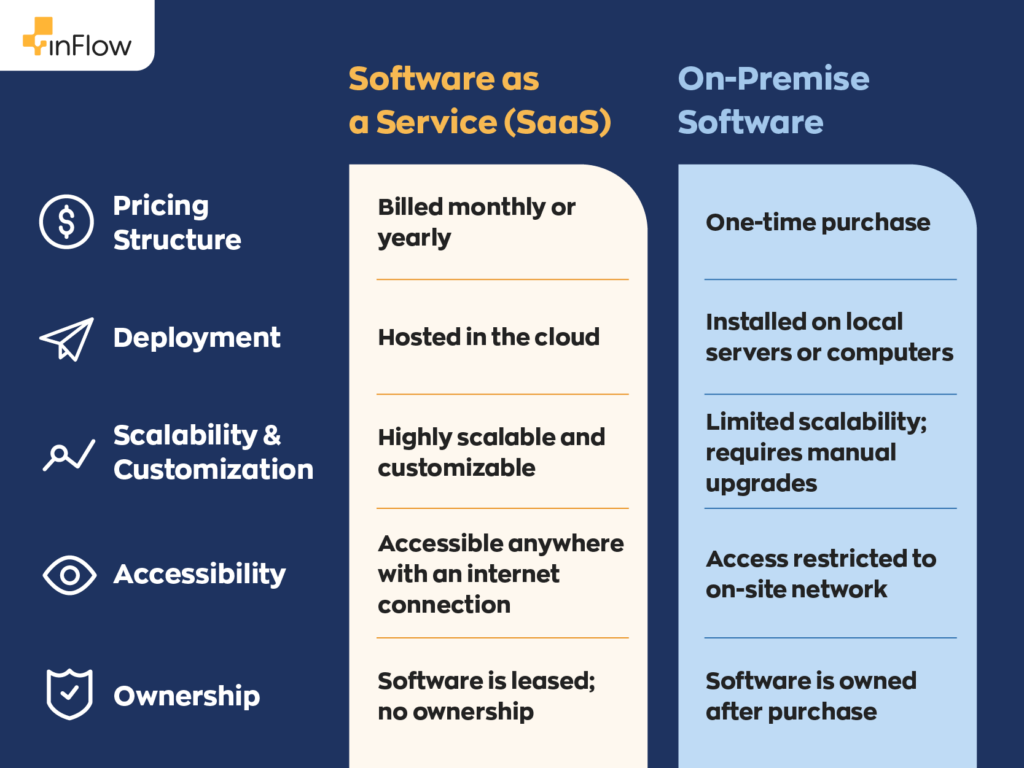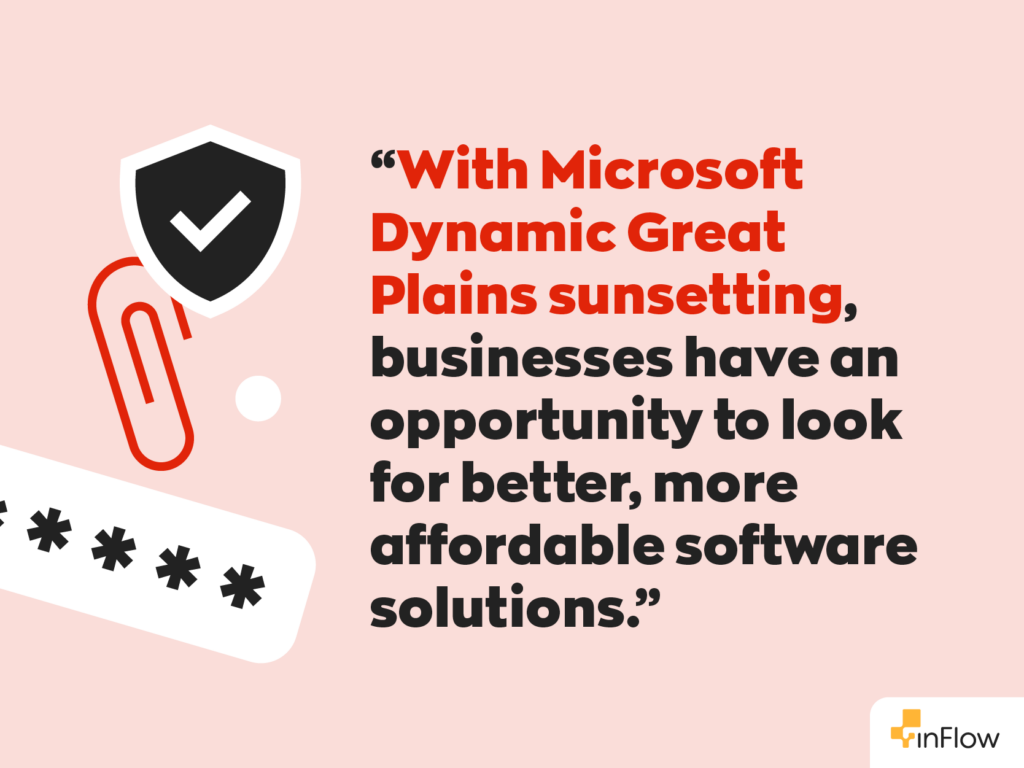Key takeaways
- Microsoft Dynamics Great Plains (GP) is an enterprise resource planning (ERP) solution and will be discontinued after September 2029. It provides a variety of business needs, such as warehouse management, financials, and so on. With Microsoft Dynamics Great Plains sunsetting, businesses must plan their transition to new systems.
- GP will not receive any further updates or support after September 2029. However, it will receive security updates until April of 2031.
- Using GP after discontinuation is not recommended, and businesses should look for alternatives.
- Businesses using Microsoft Dynamics Great Plains should plan ahead and seek alternative solutions.
- Microsoft offers a transition program to help users migrate from GP to their new cloud-based version, Dynamics 365.
In September of this year (2024), Microsoft announced the Microsoft Dynamics Great Plains sunsetting. While this doesn’t mean much to the average consumer, it has businesses worldwide looking for new solutions– and worrying about their futures. It’s also worth noting that this is somewhat of a trend, considering QuickBooks Commerce did the same last year.

So, what does this mean for current users of the Great Plains software? How long until they need to find something new? And, perhaps most importantly, what does this mean for the future?
What is Microsoft Dynamics Great Plains?
Microsoft is synonymous with Windows and the 365 suite of applications, but that’s far from the only thing they offer. They also provide business-oriented software solutions, and Dynamics Great Plains (GP) just so happens to be one of them.
It’s an enterprise resource planning (ERP) program developed with small to medium-sized businesses in mind. It provides business intelligence, warehouse management, service management, and other platforms like human resources and customer relationship management (CRM).
While Microsoft ships it as an all-inclusive platform, critics point to its complexity and many different plugins. Some features also require extra payment to access.
However, it’s a robust piece of software that many businesses still use today. This means many businesses will be left looking for alternatives now that it’s been announced that Microsoft Dynamics Great Plains will be discontinued.

Microsoft Dynamics Great Plains sunsetting: what does it mean?
Headlines like “Microsoft Dynamics Great Plains discontinued” have left many users wondering what’s next. What exactly does it mean now that Microsoft Dynamics Great Plains is sunsetting?
In the software industry, sunsetting something means intentionally discontinuing or removing it while informing users in advance. Generally speaking, from the time of announcement to discontinuation, the relevant software will receive little to no support or updates.
In this case, Dynamics GP will cease support and operations on September 30th, 2029. However, it will continue to receive security updates until April of 2031.
Why is Microsoft Dynamics Great Plains sunsetting?
There’s a lot of reasons that the Microsoft Dynamics Great Plains sunsetting is taking place, but a lot of it boils down to two reasons.
First, technology, in general, is seeing a shift towards cloud-based solutions. This is because the demand for cloud solutions continues to increase. In 2023, the US cloud market was valued at a staggering 602.3 billion USD. Experts predict it to grow at a CAGR of 21.2% from 2024 to 2030.
This increase in demand is primarily due to the power of cloud computing. Running systems on the cloud lowers the demand for on-site hardware, which is notoriously expensive. Generally speaking, cloud systems are also accessible by any device that can access the internet.
Nowadays, everyone has a small computer in their pocket, which further lowers the need for specialized hardware. It also allows employees to access important systems through unconventional means in a pinch.
The second reason, perhaps unsurprisingly, has to do with money. There’s two facets to this. First, Microsoft is already developing a cloud-based successor to Dynamics GP: Dynamics 365. It doesn’t make sense to continue the upkeep of two of the same products– especially when they’re competing with the other. And at the end of the day, cloud solutions are the future, so it makes sense to cut Dynamics GP from the catalog.

It’s also worth noting that the shift from Dynamics GP to 365 represents a change in business model. While a Dynamics GP license is a single expenditure, Dynamics 365 works on a subscription model. This aligns with the growing emergence of SaaS companies throughout the business world.
Will I need a new ERP when Microsoft Dynamics Great Plains is discontinued?
Technically, no. But effectively, yes.
An important part of maintaining software involves releasing security updates and live support for existing users. We can’t overstate the importance of these security updates. Not only do they keep customer and employee data safe, but they’re also crucial to remaining within regulations.
It doesn’t mean regulators will come knocking on your door the moment the security updates end, but it is something to be wary of.
The lack of support is another thing to keep in mind. If something goes wrong, you’re on your own. There’s no one to help fix whatever error occurs. In the worst-case scenarios, you may be unable to migrate your business data or lose it entirely. And that can be catastrophic.
Where do Dynamics GP users go from here?
The most obvious path forward for Microsoft Dynamic Great Plains users is migrating to Dynamics 365. This is mainly because Microsoft offers a migration program designed to ease the burden of transitioning from GP to 365. They also offer a no-cost assessment program that helps users understand the steps they need to take to transition to the cloud.
Of course, another option is finding a new solution entirely. It may make sense from Microsoft’s perspective for customers to just switch to their new cloud-based system. But this sunset has left many users unhappy with the company for discontinuing Microsoft Dynamic Great Plains, a software they paid for.
Now that Microsoft Dynamic Great Plains is discontinued, many businesses have an opportunity to reassess their business needs. And while GP is a robust platform, not every business needs all its features. In these cases, switching to multiple smaller solutions may make more sense. Like inFlow’s warehouse management software and QuickBooks Online, for example.

While it may seem counterintuitive to purchase two software solutions rather than just one, the reality is that buying custom software for specific solutions will always yield the best results. Also, it’s worth noting that inFlow’s warehouse management software integrates with various software solutions, including QuickBooks Online, which will eliminate a lot of double data entry.
What does this mean for businesses today?
In the short term, Microsoft Dynamics Great Plains sunsetting won’t have any real effect. It will continue to receive support and updates until 2029, after all. But that doesn’t mean current users should sit on their hands, either.
Five years may seem like a long time, but it’s hardly any in the grand scheme of things. Not only that, businesses these days record and store a lot of information. Migrating all that data takes time.
Every business has unique needs; finding a suitable platform can take some experimenting. It’s best to plan ahead and demo as many solutions as possible. Chances are there might be something new on the market that wasn’t available when your company first started using Microsoft Dynamics Great Plains.






0 Comments